Observations of asteroid 2000 DP107 provided the first images of a
binary asteroid in the near-Earth population. The data show that it
is composed of an ~800 meter diameter primary and a ~300 meter
diameter secondary revolving around their common center of mass.
Initial results were published in our Science paper:
J. L. Margot, M. C. Nolan, L. A. M. Benner, S. J. Ostro,
R. F. Jurgens, J. D. Giorgini, M. A. Slade, and D. B. Campbell.
Binary Asteroids in the Near-Earth Object Population.
Science 296, 1445--1448, 2002.
Key results from our 2002 paper are as follows:
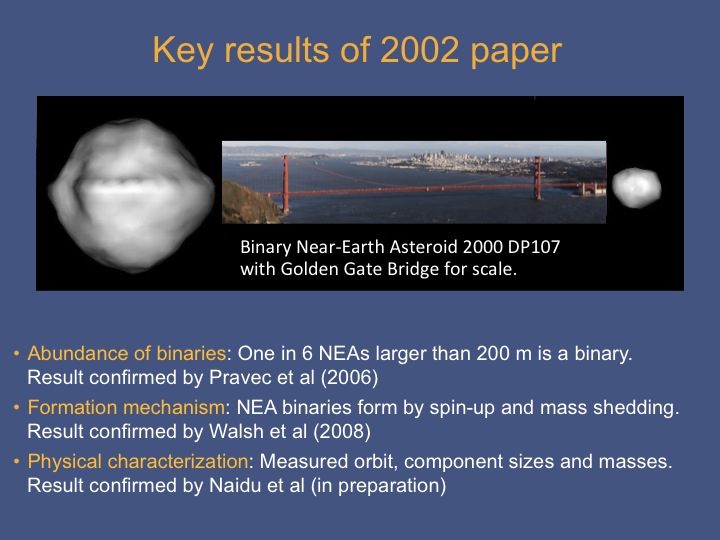
The 2000 data were of sufficient quality to derive the mutual orbit of the
binary, including a measurement of the reflex motion.
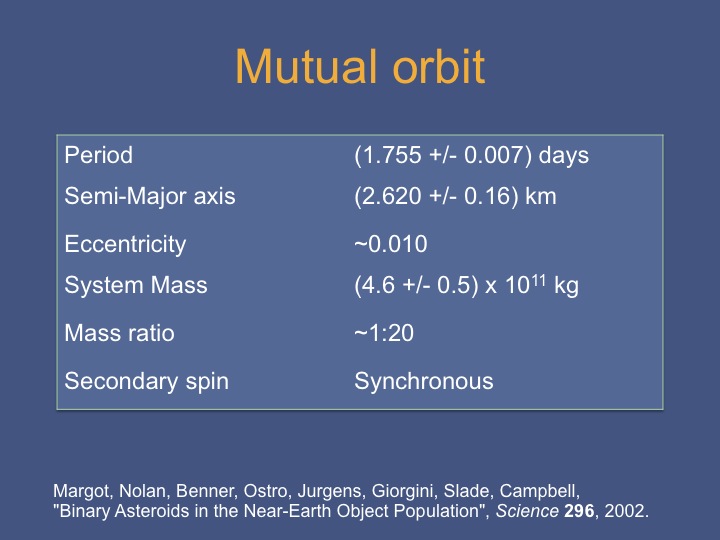
The asteroid made another close approach to Earth in 2008. The
2008 data are of much higher quality, enabling additional analysis (Naidu et al, in preparation).
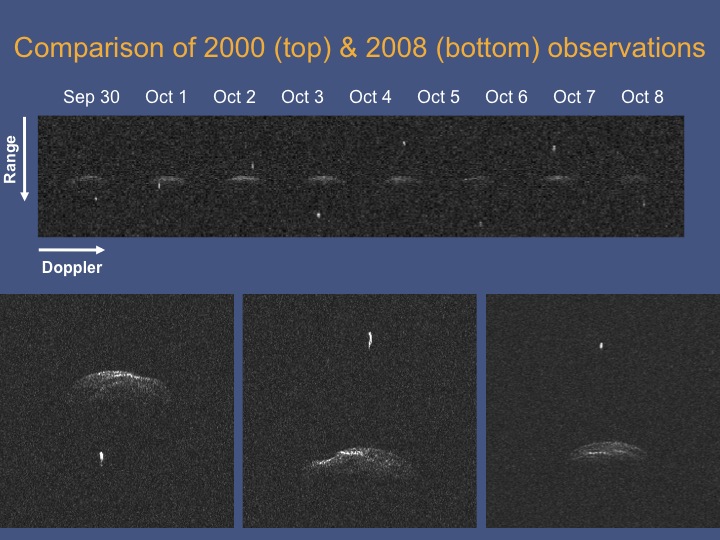
Below are some results and animations from our 2000 observations.
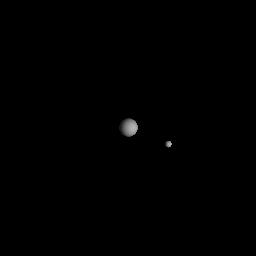
|
An animation showing the orbital motion of the binary asteroid 2000
DP107 as it would be seen from an observer on Earth close to the time
of closest approach on Sep 19, 2000. The animation spans the time
interval between Sep 9, 2000 and Oct 9, 2000, so the binary asteroid
is first seen to approach then recede. One can see the change in
solar illumination as the asteroid travels along its orbit, as well as
eclipses and occultations. Also, the orientation of the orbital plane
varies as seen by an observer on Earth, because the animation geometry
(camera view) changes due to the Earth - asteroid relative motion. Click
on the image for the 1.1 MB animation.
|
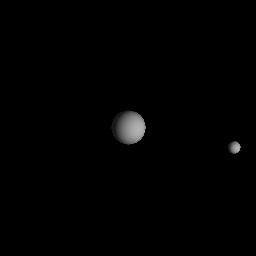
|
Same as before, except that the distance of the observer is now fixed
to better illustrate the eclipses and occultations. Except for
distance, the aspect changes due to the relative Earth - asteroid
motion are included as above. An eclipse occurs when light from the
Sun is obscured. An occultation occurs when one component passes in
front of the other as seen by an observer on Earth. Click on the
image for the 1.4 MB animation.
|

|
A total eclipse of the primary by the secondary occurs on Sep 30, 2000
near 18:50 UTC. Careful measurements made by Petr Pravec (Ondrejov
Observatory, Czech Republic) at the same time showed the brightness
attenuation as the secondary obscured light from the sun. Click on
the image for a 50 kB animation of the eclipse.
|





